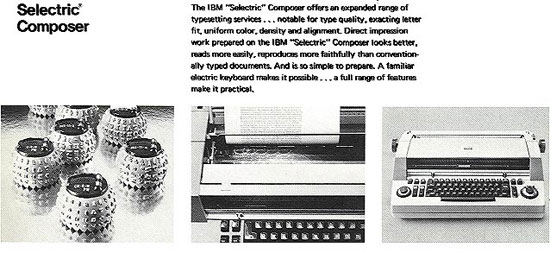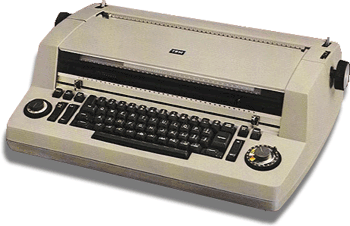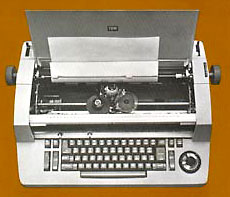
This piece is 2,350 words or about 5 printed pages long.
Looking back almost thirty years I see myself at the Number 30 bus stop in Earls Court in west London late in the evening, heading back home to Hackney with an enormous load of printed sheets in carrier bags. I’ve been printing in the basement of the Poetry Society in Earls Court Square. This printshop was Bob Cobbing’s doing. The Poetry Society had been distinctly lacking in energy and the big building in Earls Court Square which it had occupied for so long was under-used. You could describe Bob Cobbing’s ‘takeover’ as a classic case of entryism, a matter of taking the trouble to turn up at the AGM, put up candidates and making sure you were there to vote. As well as the printshop the new committee had established a Bookshop, while the Poetry Review, now printed in the printshop in the basement, was being edited by Eric Mottram and the programme of readings the society organised had been transformed. Needless to say there was a terrible fuss. To start with it was a rather eccentric clique calling itself the Poetry Society Reform Group who started calling Emergency General Meetings, then in due course the ‘mainstream’ mobilised and Cobbing and his Committee were voted out.

IBM Selectric Composer brochure, detail
The printshop had a platemaker and offset litho press and some binding equipment and, until somebody walked off with it, an IBM Composer. This machine was a sort of glorified typewriter which by automatically adjusting the spaces between letters produced the effect of traditional typesetting. You typed up the text, printed it out and then you had to cut it up and paste down the bits. Next it was a matter of photographing it to make a plate to print from. Anyone who was a member of the Society could come here and print and it did work, thanks to the very efficient and helpful print shop manager, on hand to show you how to do it. Having got the sheets home, I collated them, and then laboriously stapled and trimmed the pamphlets myself using a metal ruler and Stanley knife.

IBM Selectric Composer
In fact I went on doing this stapling and trimming myself for a long time, though it would have cost little more to have paid to have it done. Doing it yourself, and doing it more cheaply, can become a way of life, and this was what the new technology of printing seemed to make possible. Today of course anyone can do the whole business of typesetting using a word processor at home, but back then I would find myself spending enormous amounts of time pasting in corrections, sometimes no more than a single word carefully cut out and pasted over the top of the error, while inhaling the heady petrol-smelling fumes of the rubber solution (the paste).
Another Winter’s evening after work and I’m hurrying through Camden Town to the basement where Bread’n Roses (TU) have their premises. TU (trade union) because they are a left-wing organisation and want to emphasise their support for the Print Unions in their doomed struggle against the new technology of computer setting — which is what the Murdoch Press’ battles with the Print Unions were all about. I am all right because poetry is, in what is to be honest some rather nebulous way, associated with ‘the struggle’, so I can rent the use of one of their IBM composers by the hour.
This doing-it-yourself did come out of the Sixties. ‘Alternative publishing’ comprised not only poetry — there was the whole community publishing movement, as it flourished around Centerprise Bookshop in East London, for instance, where local people were encouraged to write and publish their own life stories and thereby take fuller possession of their own lived experience. Manuals were produced showing people how to do it, and it’s no coincidence that many of the principal specialist poetry publishers started around that time, publishers that were by and large to replace the ‘poetry lists’ that so many mainstream literary publishers had previously maintained using income generated by more successful books to cross-subsidise their slim volumes. The other day I came across a letter I received from Neil Astley back in 1980 describing how he was got Bloodaxe going. ‘I do my design and layout, and darkroom work … How much I do depends on the size of the job and who’s doing it. There’s a place in Newcastle called the Tyneside Free Press workshop. I used to use their IBM composing typewriter in their (and my) earlier days. I also used to fold collate and stitch myself.’

1966 IBM Selectric Composer
It was the sense of possibility that drew me to it in the first place, the way it shortened the distance from here to there, from text to print. You could just go out and do it, not be dependent on anyone else. And starting a poetry press — I started The Many Press in 1975 — did have a lot to do with the technology, the advent of offset litho. Printing became in real terms cheaper and you could say it was demystified. Printing, like any other craft, acquires its mystique — indeed the terms ‘craft’ and ‘mystery’ have traditionally gone together, a connection still preserved in a peculiar fossilised form in the language and rituals of Freemasonry. When that goes, something is lost. Back then it was a friend’s golfball typewriter that represented that new possibility and I typed up a sequence of my own poems (well you have to start somewhere) and got them printed at a copy shop, and so my press was launched.
I could go back further, back to the ‘John Bull Printing Set’ I had when I was about ten. You fixed the letters into a small wooden holder, pressed it into an ink pad and then onto the paper. There was the fascination of making a mark, and being able to make it again and again. It is the physical nature of it, the satisfaction afforded by that, because language is an abstraction and to escape from the tyranny of the abstraction and one’s continual wrestling with it and into the concreteness of that mark and the sheer substance of paper affords a kind of relief. One envies painters sometimes the materiality of what they do. I am sure incidentally that someone did once publish a poetry pamphlet using a John Bull Printing Set.
The ingenuity involved in trying to produce a good-looking product for a minimum outlay has its own fascination. I used to go to a paper merchant’s in Bermondsey to buy special fine paper for the covers. There was the physical pleasure of leafing through samples, which by their very existence seem to summon up a page of print. The ‘quick copy’ printer I used in the West End was prepared to print on these papers if I supplied them, and a wraparound cover, covering the stapled spine, added to the appearance of the finished product. You could then number the individual copies and get the poet to sign the first ten. You could even get him or her to write in a poem into the numbered copies — ‘additional holograph material’.
I’m not sure what I think about this. It all seems a rather spurious way of ‘adding value’, like artists numbering prints and then destroying the plates. (Rembrandt just went on printing till the plate wore out.) It seems to be a case of an industrial process mimicking the earlier craft process. There is a confusion that can arise, or certainly that arose sometimes back then in the mid-Seventies, when people would ask ‘Do you have a press’, meaning a printing press to do my own printing. It is the tradition of the ‘private press’. There is the ‘bite’ of letterpress — it’s a sense of immediacy — the moment of that impress and its physicality.
Once, having sold some small press items, and my copy of Heaney’s Death of a Naturalist — I’d bought it when it came out, it was still in mint condition and complete with dustwrapper — I bought a few antique coins. I remember the first time I went to a coin fair, and the dealer whom I subsequently bought several Greek coins from showing me what he had: “This is very early, from Aegina. A turtle, You can see how they must have done it. They just managed to catch it in time to impress the die on it. Sixth century BC.” A hot glob of silver, and, impressed on it in high relief, the turtle’s back! … The coin I bought, a small thing, the silver shining but dark-toned, was a drachma with the head of Apollo and on the reverse, in an incuse, that is, recessed, square, the lyre. The lyre is small and spiky, the lettering around it a small shower of script and looking at it you can sense that hardening moment. Looking at the very plain and handsome lettering on Roman bronze coins you can see where Times Roman comes from.
So, the ‘private press’, is it a nostalgia for substance? Like organic food — bloody meat, carrots with mud still on them… But fine printing can become an end in itself, as if the craft subsumes the content of what is actually being printed. Caresse Crosby, the American heiress who with her husband Harry Crosby founded and ran the Black Sun press in Paris in the Twenties, exclaims in her breathlessly written autobiography how excited they were when their first production came back from the printer: ‘Nothing could have been nicer, especially the margins’, as if all that fine white paper round the edges were the point.
Meanwhile might extreme economy of means generate its own aesthetic — what is the least you need to produce this object that can be circulated and read? The A4 duplicated stapled pamphlet was a feature of poetry publication back then — the first issue of my Vanessa magazine was run off on the school duplicator of the North London comprehensive school where a friend was teaching. Some of those publications looked rather good. John Robinson’s Jo Dimaggio Press produced duplicated pamphlets using the old-fashioned long narrow folio format, run off in his North London bedsitter. Through the use of coloured inks, careful layout and generous spacing as well as interesting covers, the effect is both utilitarian and surprisingly elegant. There was the typewriter typeface used in The Resuscitator, a magazine produced in Cambridge in the late Sixties. The plainness and openness of this typeface mirrored the directness and freshness the poems were aiming at, and the wish to make it new. A similar typeface, though with more lavish overall production standards, was a notable feature of Andrew Crozier’s Ferry Press productions, starting at about the same time.
Another letter I came across the other day was from Tambimuttu, addressed to a magazine I was connected with. It sounded like a rather forlorn attempt to pick up old, long-lost connections. This was the man who, after having run Poetry London, the magazine of the Forties, was now in the mid-Seventies trying to get going again. The letter heading is ‘The Seahorse Press’, but he writes: ‘I have another press, the Lyrebird press… This new imprint is vaguely intended to be a holding company for Lyrebird, in case my creditors get at me!’ Reference to creditors and ‘holding company’ carries a faint whiff of that nineteen-forties pub Bohemia, very different from the ostensibly squeaky-clean world of today’s grant-aid, with the requirement to produce financial projections, business plans… It’s as if the applicant is required to mimic the capitalist process, though if he or she were part of that system, investing money to yield a profit, grant aid would presumably not be needed in the first place. What it amounts to is a kind of capitalist political correctness.
A few years after starting the Press I circulated a number of people suggesting a form of publishing co-operative for poetry, but there weren’t any takers. Interestingly, when talking to an writer, the verb ‘publish’ can be used actively as well as passively. ‘Have you published a book recently?’ one says, rather than ‘have you been published?’ I have sometimes felt like saying, when approached with a manuscript, ‘Why are you asking me to do for you something you could perfectly well do for yourself?’ If I do it, as a small press specialist poetry publisher, I’m doing it in my own ‘free time’. I’m not getting paid for it, and I don’t really have any special training or expertise or source of finance. Assuming you produce your own typesetting — not difficult — then it really need not cost very much to produce a couple of hundred copies of a perfectly presentable pamphlet. The degree of commitment needed to move up from pamphlets to full-scale book publishing is of course enormous, and while my press did go on to produce some full-length collections, as well as a great many pamphlets of around 24 to 36 pages, I lacked the extraordinary level of single-minded commitment to go all the way in seeking to expand it. The problem is not a question of money exactly, though people will always assume it is. It is more a question of time and energy and the pressure of other commitments.
Going back to the ‘Bread and Roses’ Collective, I remember going to a meeting called by the Collective following a split that had arisen between those in the group who wanted to move into computer setting, then the ‘newest’ technology, and those who said no, this would place the technology beyond the reach or ordinary people, political and community activists, for whom the computer technology would be too complex and too expensive. Little did they know, such is the speed of development in this area. Now there is print-on-demand. But what I find myself going back to above all is that sense of possibility, the fact that at the end of the day you can simply go out and do it yourself.